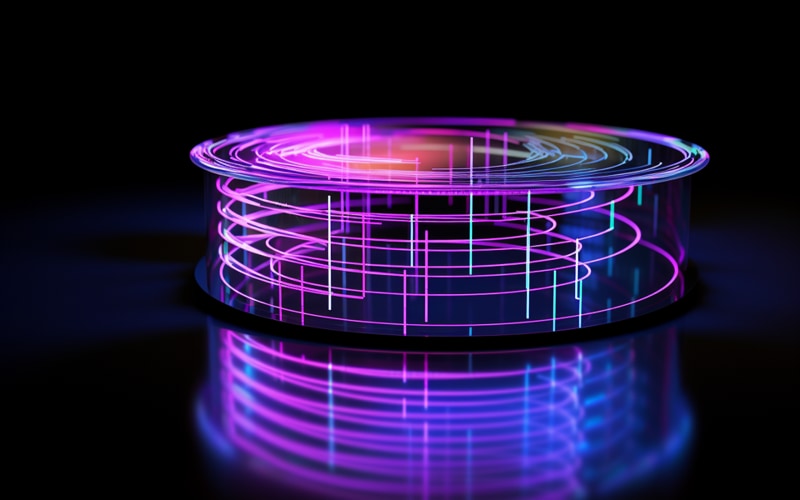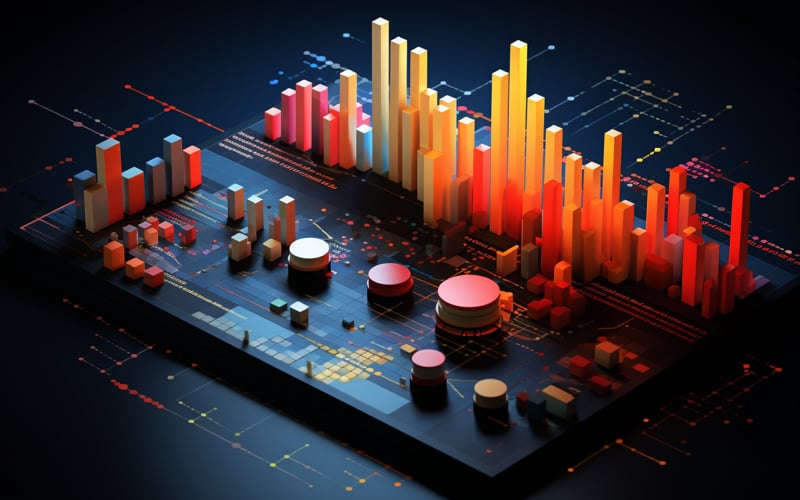NoSQL Interview Questions
NoSQL Interview Questions provides all the resources for experienced developers and newcomers preparing to sit for NoSQL interviews.
Not Only SQL (NoSQL) is a cutting-edge database system for quickly processing large volumes of unstructured data.
As data processing becomes increasingly sophisticated and real-time data analysis becomes standard practice, NoSQL database interview questions have become essential to any backend engineer’s toolbox.
This blog seeks to provide a complete introduction and overview of NoSQL technology and its many use cases, as well as some frequently asked NoSQL interview questions and answersto equip you with everything needed for success in any NoSQL interview you may encounter.
Let us venture forth together to explore NoSQL!

1. What does “NoSQL” refer to in the context of data storage and management?
“NoSQL” refers to storing data in databases without relying on structure or schema, offering a flexible structure, scalability, and fast access.
2. How were relational databases designed in the 1970s?
Relational databases developed in the 1970s were designed to provide asset properties such as consistency, durability, and minimal duplication.
They were also designed to be easy to store and use a particular language called SQL (structured query language).
3. What prompted the development of NoSQL databases?
The development of NoSQL databases was prompted by the need for a solution to store data without relying on structure or schema, making it easier to access and scale.
4. How do NoSQL databases handle data fetching and searching compared to relational databases?
NoSQL databases focus on reading rather than writing, making searching and fetching large amounts of data more accessible than relational databases.
They store data to make it easier to access and don’t use normalisation.
5. How can server capacity be improved to scale an application?
Server capacity can be improved through vertical or horizontal scaling.
NoSQL databases make this process more efficient with flexibility, scalability, and fast access.
6. Which companies have developed and adopted NoSQL databases?
Companies like Oracle, Cassandra, and IBM have developed and adopted NoSQL databases.
They have also introduced open-source solutions to address the scalability and scalability issues of RDBMS.
7. Explain Data Stash, and what is its resolution?
Data Stash is a cloud service that allows users to use database services without installing software on their machines.
Its purpose is to make database access more convenient and accessible.
8. How do tabular databases and comprehensive column databases differ from each other?
Tabular databases focus on columns, making it easier to fetch data.
Comprehensive column databases, on the other hand, allow for one key and one row with multiple columns.
9. Describe the relationship in databases.
Relationship databases, like graph databases, are created for large-scale applications like Facebook.
They are used to handle and store large volumes of data with complex relationships between data points.
10. What are some examples of graph databases and multi-model databases?
Neo4j and Cassandra are used for graph databases, while multi-model databases allow multiple models to be used in an application.
11. Why are situated non-relational or NoSQL databases developed?
NoSQL databases are developed to address big data performance and scalability issues that relational databases cannot handle.
They are used by businesses and enterprises that require access to large amounts of unstructured data.
12. What is SQL, and what is it used for?
SQL (Structured Query Language) is a standardised programming language used to manage databases and perform various operations on data.
It is used for modifying database tables and index structures, adding, updating, and deleting rows of data, as well as retrieving subsets of information from within the database management system.
13. What are relational databases, and which ones are examples of such databases?
Relational databases are database management systems that store data in tables and are managed using SQL.
Examples include MySQL, Oracle, Microsoft SQL Server, SQL Server Lite, and PostgreSQL.
14. What is the difference between relational (SQL) and non-SQL (non-relational) databases?
The main difference between relational (SQL) and NoSQL (non-relational) databases is that the latter does not require a fixed schema and stores data in a non-tabular format.
15. Name a few popular NoSQL databases and their unique features.
Popular NoSQL databases include MongoDB, Apache HBase, Cassandra, Redis, and Neo4j.
MongoDB stores data as separate documents within collections, while critical value pair databases store data in a hash table.
Column-based databases store data in groups of columns, and graph-oriented databases represent data as a directed graph.
16. What are the different types of NoSQL databases, and how do they store data?
NoSQL databases come in four types: document-oriented, key-value pair, column-based, and graph-oriented.
Document-oriented databases store self-describing JSON, XML, and BSON documents, while key-value pair databases store data in a hash table.
Column-based databases store data in groups of columns, and graph-oriented databases represent data as a directed graph.
17. What are some use cases where NoSQL databases are preferred over relational databases?
NoSQL databases are preferred for large amounts of data or ever-changing data sets, social networks, logistics, and spatial data applications.

NoSQL Training

18. How do NoSQL databases store data differently from relational databases?
NoSQL databases store data as separate documents within collections, which act similarly to a table in a conventional SQL database but do not have a strict schema.
19. What remain the primary advantages of SQL databases, and how do they differ from NoSQL databases regarding scalability?
SQL databases are relational, have a fixed logical schema design, and are well-suited for complex queries.
They are vertically scalable, allowing for improvement on a single server.
On the other hand, NoSQL databases can support horizontal scaling, allowing for better performance and more nodes.
20. Explain the advantages of NoSQL databases.
NoSQL databases provide high performance, scalability, availability, and flexibility.
They are open-source and schema-less, making them easier to download online.
However, they lack standardisation, leading to consistency issues and limited query capabilities.
21. What types of databases are more suitable for SQL and NoSQL databases?
SQL databases are suitable for relational databases, while SQL databases are suitable for distributed systems and hierarchical storage structures.
22. How many types of NoSQL databases are there, and what are they?
There are three types of NoSQL databases: key-value, tabular, and graph.
23. What are Data Stacks, and how is it related to implementing NoSQL databases?
Data Stacks is a platform that offers a wide range of databases, making it an ideal choice for implementing NoSQL databases.
Users can create an account on data stacks dot com or use a GitHub or Google account to access various features.
24. How is it related to NoSQL databases?
AstraDB is an open-source database built by Facebook based on a project called Cassandra.
It supports fundamental values and document types, making it suitable for implementing NoSQL databases.
25. What is Astra DB?
Astra DB is a database service that allows users to create and manage databases.
26. What is Cassandra, and what is it used for?
It is a distributed database service that requires users to store their database on Azure.
It is used for critical values, document types, and tabular data.
27. What are the three types of tables mentioned in the database?
The three types of tables mentionedare key-value, document type, and tabular.
28. What is CQL, and how is it related to SQL?
CQL stands for Cassandra Query Language, similar to SQL (Structured Query Language).
Both are used to manage and manipulate database data, but CQL is designed explicitly for Cassandra databases.
29. How can team members be involved in creating a better data model?
Team members can be involved in multiple projects with various tasks or milestones.
Each task can have sub-tasks, to-do’s, and items.
This helps in creating a better data model.
30. What is Quixql, and what is it used for in Apex?
Quixql is a tool in Apex that quickly generates the SQL required to create relational data models for index documents.
It helps in optimising the datasheet for a project task.
31. How can you create a table in CXQL?
To create a table in CXQL, you can use team, Discord members, and indentation to create columns like username, full name, email, and phone.
32. What is the whole data model?
The whole data model for CXQL consists of tables, column directives, table directives, and data types.
33. What are the application features created from the objects?
The application features created from the objects in CXQL include page and page access control.
34. How does the engine pick the correct item based on the data type?
The engine picks the correct item based on the data type and creates a complete app from the data model created in Quick SQL.

NoSQL Online Training

35. What is DataStax Astra DB, and what is it used for?
DataStax Astra DB is an open-source platform allowing users to create and manage databases without requiring software installation.
Users must create a database using the CQL console.
36. How is data stored in Cassandra?
Data is stored in Cassandra in a table format, combining tables.
When combining multiple tables, a critical space is created, which will have a collection of tables.
37. What is the main difference between SQL and RDBMS?
The main difference between SQL and RDBMS is that SQL does not have foreign constraints or keys, meaning it cannot relate to two tables or use joins.
38. How is the necessary space defined in Cassandra?
The necessary space is defined in Cassandra by first determining its structure.
Users can use a column with the name to store a name, such as “first name” or “last name”.
39. How is a table created in SQL?
A table is created in SQL using the “create table” command with round brackets.
For example, write the query “create table s” in the comment section to create a table with three columns.
40. What happens when multiple tables are combined in Cassandra?
When multiple tables are combined in Cassandra, a critical space is created with a collection of tables.
41. What remains the resolution of normalisation?
Normalisation in SQL is used to store data in multiple tables so that it will not repeat, optimising storage and rights.
42. Explain the benefit of demoralised tables in SQL.
Denormalised tables optimise reads and fetch data as quickly as possible, making the system faster.
43. What key concepts are required to create a table?
To create a table in SQL, one must understand the concepts of normalisation, denormalised tables, and different data models.
44. How can you maintain uniqueness in a table using SQL Server and CQL?
A primary key is used for each table to maintain uniqueness in a table using SQL Server and CQL.
Multiple ways to get a primary key include using a namespace or a primary key column.
This multiple-choice test is a terrific opportunity to display your energy and enthusiasm; the more people who take it, the higher your results will be.
1. What does the term “NoSQL” refer to?
Storing data in relational databases
Solution to store data without relying on structure or schema ✔️
The articular language used in relational databases
process of normalisation in data storage
2. What kind of databases were developed in the 1970s?
NoSQL databases
Relational databases ✔️
Object-oriented databases
Graph databases
3. What are the main features of the relational databases?
Flexibility, scalability, and fast access
Asset properties such as consistency, durability, and minimal duplication
Easy to store and use a particular language called SQL
All of the above ✔️
4. Which of the following companies developed RDBMS?
Oracle, Sun, and open-source projects like Postgres ✔️
Google, Amazon, and Microsoft
Apple, Facebook, and Twitter
None of the above

5. When did companies start storing data for various purposes like machine learning?
In the 1970s
After 2000 ✔️
In the 1990s
In the 2010s
6. What are the advantages of NoSQL databases?
Flexibility, scalability, and fast access ✔️
Asset properties such as consistency, durability, and minimal duplication
Easy to store and use a particular language called SQL
None of the above
7. Who developed NoSQL databases?
Oracle, Cassandra, and IBM ✔️
Google, Amazon, and Microsoft
Apple, Facebook, and Twitter
None of the above
8. What are some types of databases in NoSQL?
Crucial value, document type, and document databases ✔️
Relational, object-oriented, and graph databases
Key-value, column-family, and wide-column databases
All of the above
9. How do critical value databases store data?
JSON format ✔️
Binary arrangement
Tabular presentation
Graph format
10. What is the advantage of document-type databases?
Data is sent directly from the server to the client without processing. ✔️
They offer scalability and performance.
They are ideal for real-life applications.
None of the above
NoSQL has become essential to modern data management systems, meeting increasing scalability, flexibility, and performance demands.
Database management systems offer several advantages over standard relational databases, including their capacity for handling massive volumes of information on NoSQLMongodb interview questions, support for various data types and faster retrieval times.
This blog’s NoSQL questions and answersaim to assist readers with grasping NoSQL’s core ideas and principles, with use projected to increase as big data becomes more pervasive in real-time applications.
Hopefully, this Platform has given you a better understanding of NoSQL and helped you prepare for an interview in NoSQL!
Thank You!!!

NoSQL Course Price


Shekar
Author